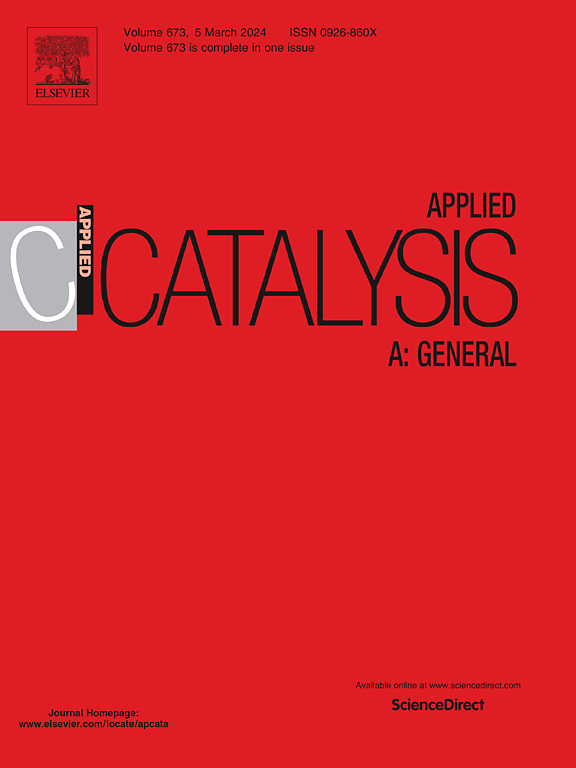In-situ ionothermal synthesis of amorphous poly (heptazine imide) for the photoredox conversion of water
IF 4.7
2区 化学
Q2 CHEMISTRY, PHYSICAL
引用次数: 0
Abstract
In this study, in-situ ionothermal one-step synthesis was chosen to prepare amorphous potassium poly (heptazine imide) (APHI). The synthetic by-product potassium chloride (KCl) is critical in the thermal polymerisation procedure, which can effectively control the precursor conversion, optimise the structure and obtain amorphous APHI. Compared with the traditional highly crystalline poly (heptazine imide) (PHI), APHI maintains the chemical structure of PHI while introducing cyano groups and adjusting the bandgap. resulting in a higher photogenerated charge transfer rate and improved photocatalytic activity. The hydrogen production rate of APHI reaches 67 μmol h−1, and its apparent quantum yield (AQY) is 4 % at 420 nm. It's worth mentioning that APHI also achieved remarkable results in the H2O2 generation reaction, with a generation rate of 382 μmol h−1. This rate surpasses that of highly crystalline PHI and other carbon-nitride-based catalysts such as PTI, CN. The improvement is likely attributed to its amorphous structure and the incorporation of cyano groups. The in-situ ionothermal one-step synthesis method introduced in this study not only offers a new way to prepare APHI but also provides valuable insights for designing highly efficient photocatalysts.
用于水光氧化还原转化的非晶态聚七嗪亚胺的原位离子热合成
本研究采用原位离子热一步法制备了无定形聚七嗪亚胺钾(APHI)。合成副产物氯化钾(KCl)在热聚合过程中起着至关重要的作用,它可以有效地控制前驱体转化,优化结构,获得非晶APHI。与传统的高结晶聚七嗪酰亚胺(PHI)相比,APHI在保持PHI的化学结构的同时引入氰基并调节带隙。从而提高了光生电荷转移速率,提高了光催化活性。APHI的产氢率达到67 μmol h−1,在420 nm处的表观量子产率(AQY)为4 %。值得一提的是,APHI在H2O2生成反应中也取得了显著的效果,生成速率为382 μmol h−1。这一速率超过了高结晶的PHI和其他碳氮基催化剂,如PTI、CN。这种改进可能归因于其无定形结构和氰基的掺入。本研究提出的原位离子热一步合成方法不仅为制备APHI提供了新的途径,而且为设计高效光催化剂提供了有价值的见解。
本文章由计算机程序翻译,如有差异,请以英文原文为准。
求助全文
约1分钟内获得全文
求助全文
来源期刊

Applied Catalysis A: General
化学-环境科学
CiteScore
9.00
自引率
5.50%
发文量
415
审稿时长
24 days
期刊介绍:
Applied Catalysis A: General publishes original papers on all aspects of catalysis of basic and practical interest to chemical scientists in both industrial and academic fields, with an emphasis onnew understanding of catalysts and catalytic reactions, new catalytic materials, new techniques, and new processes, especially those that have potential practical implications.
Papers that report results of a thorough study or optimization of systems or processes that are well understood, widely studied, or minor variations of known ones are discouraged. Authors should include statements in a separate section "Justification for Publication" of how the manuscript fits the scope of the journal in the cover letter to the editors. Submissions without such justification will be rejected without review.
 求助内容:
求助内容: 应助结果提醒方式:
应助结果提醒方式:


